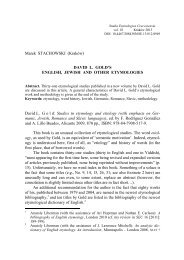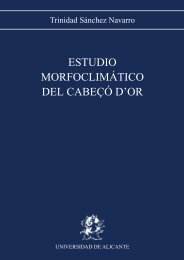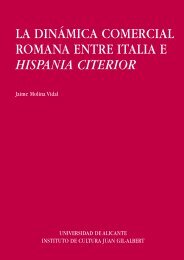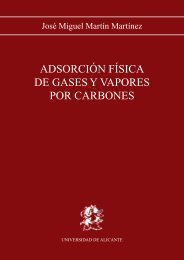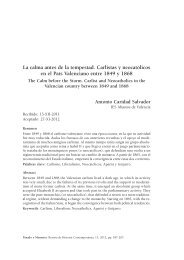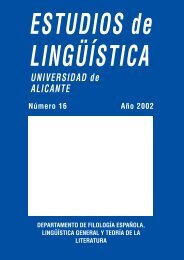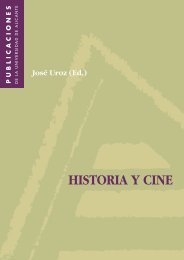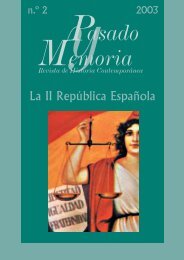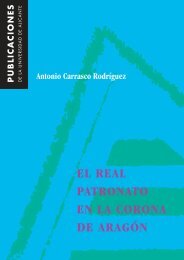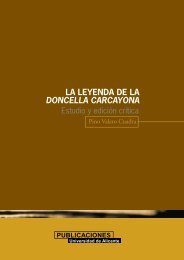English and Galician in the Middle Ages - Publicaciones ...
English and Galician in the Middle Ages - Publicaciones ...
English and Galician in the Middle Ages - Publicaciones ...
Create successful ePaper yourself
Turn your PDF publications into a flip-book with our unique Google optimized e-Paper software.
<strong>English</strong> <strong>and</strong> <strong>Galician</strong> <strong>in</strong> <strong>the</strong> <strong>Middle</strong> <strong>Ages</strong>:<br />
A Sociohistorical Survey<br />
Begoña Crespo García<br />
cial order Nevala<strong>in</strong>en <strong>and</strong> Raumol<strong>in</strong>-Brunberg (1996: 305) put forward<br />
<strong>the</strong> use of <strong>the</strong> term class “to refer to <strong>the</strong> function of a social group <strong>in</strong><br />
<strong>the</strong> process of production”, although ano<strong>the</strong>r way of establish<strong>in</strong>g social<br />
categories would be to resort to <strong>the</strong> “orders model”, which “relates<br />
social hierarchy <strong>in</strong> earlier societies to ‘orders’ or ‘states’, each of which<br />
performs a necessary function”. The model of social classes is <strong>the</strong> one<br />
that best describes <strong>in</strong>dustrialised societies; however, to account for<br />
pre-<strong>in</strong>dustrialised societies such as <strong>the</strong> mediaeval or <strong>the</strong> renaissance,<br />
<strong>the</strong> hierarchies organised <strong>in</strong> groups or strata form <strong>the</strong> most adequate<br />
social model.<br />
6. Clerical proctors, knights <strong>and</strong> burgesses were summoned to parliament.<br />
Among <strong>the</strong>se two groups <strong>the</strong>re were weighty men, merchants,<br />
members of rich families <strong>and</strong>, even, small traders <strong>and</strong> shopkeepers.<br />
<strong>English</strong> was <strong>the</strong>ir ma<strong>in</strong> vehicle of expression, although for those with a<br />
higher rank knowledge of French as a complement to <strong>the</strong>ir education<br />
was probable.<br />
7. “The Irm<strong>and</strong>iños protagonised <strong>the</strong> fi rst bourgeois revolt <strong>in</strong> Europe<br />
long before <strong>the</strong> one <strong>in</strong> 1789. The townspeople <strong>and</strong> <strong>the</strong> gentry raised up<br />
arms to fi ght aga<strong>in</strong>st <strong>the</strong> aristocracy. Therefore, it was <strong>the</strong> fi rst historical<br />
attempt to take from <strong>the</strong> nobility its predom<strong>in</strong>ant role, but <strong>the</strong>y were<br />
defeated”. (My translation)<br />
8. In 1346 <strong>the</strong> petition was concerned with <strong>the</strong> expulsion of all foreign<br />
monks <strong>and</strong> <strong>the</strong> acquisition of <strong>the</strong>ir states for <strong>the</strong> crown; new petitions<br />
were frequently repeated.<br />
9. An example of it is <strong>the</strong> prov<strong>in</strong>cial synod of Benedict<strong>in</strong>es issued <strong>in</strong><br />
1343.<br />
CONTENTS<br />
49



